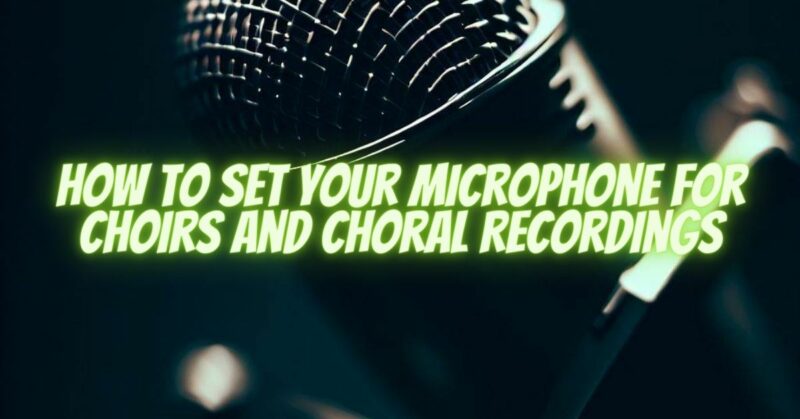Capturing the majestic sound of a choir or choral ensemble requires careful microphone setup and considerations. Whether you’re recording a live performance or creating a studio-quality choral recording, getting the microphone placement and settings right is crucial to preserving the beauty and intricacy of the choir’s harmonies. In this article, we provide a comprehensive guide on how to set your microphone for choirs and choral recordings, helping you achieve stunning and faithful reproductions of these awe-inspiring musical performances.
- Choosing the Right Microphone: Selecting the appropriate microphone is the first step in capturing the essence of a choir. Consider using large-diaphragm condenser microphones known for their sensitivity and ability to capture subtle nuances. Alternatively, you can opt for stereo microphones or a combination of microphones to achieve a balanced and immersive sound.
- Microphone Placement Techniques: a. Spaced Pair: Position two microphones equidistantly in front of the choir to capture the overall sound and stereo imaging. This technique provides a natural and spacious representation of the choir. b. Decca Tree: Use three microphones arranged in a “tree” configuration above the choir. This technique enhances depth and captures a wide stereo image, ideal for larger choral ensembles. c. ORTF Technique: Place two cardioid microphones in a specific configuration (17 cm apart, angled at 110 degrees) to capture a precise stereo image with good depth and separation. d. Close Mic Placement: For smaller vocal groups or individual sections within a choir, close mic placement can be employed to capture more focused and intimate recordings.
- Consider the Acoustic Environment: The acoustic characteristics of the recording space greatly influence the captured sound. Choose a venue with a favorable acoustic environment, such as a church or concert hall with good natural reverb. Experiment with microphone placement and consider using baffles or acoustic panels to control reflections and create a balanced sound.
- Setting Microphone Levels: Ensure proper microphone gain staging to achieve optimal signal-to-noise ratio. Avoid clipping by setting input levels conservatively. Monitor the recording levels and adjust the gain accordingly to capture a clean and undistorted audio signal.
- EQ and Processing: Minimal EQ adjustments may be necessary to enhance the choral sound. Use a gentle high-pass filter to remove low-frequency rumble and consider slight boosts or cuts in the midrange to address any tonal imbalances. Be cautious not to overly manipulate the natural sound of the choir.
- Recording Techniques: a. Live Performances: Position microphones strategically to capture the choir as well as the room ambience. Consider using spot microphones for soloists or sections that require emphasis during post-production. b. Studio Recordings: Take advantage of the controlled environment to capture pristine recordings. Experiment with microphone placement and consider overdubbing individual sections or voices to achieve a polished and balanced mix.
- Monitoring and Quality Control: Regularly monitor the recordings during the session to ensure capturing the desired sound. Listen for any anomalies, adjust microphone placement if needed, and make note of any potential issues for post-production editing.
Conclusion:
Recording a choir or choral ensemble is a delicate art that requires meticulous attention to microphone placement, selection, and settings. By choosing the right microphone, employing appropriate placement techniques, considering the acoustic environment, setting proper levels, and applying minimal EQ adjustments, you can capture the awe-inspiring beauty of a choir’s harmonies. Whether it’s a live performance or studio recording, following these guidelines will help you achieve faithful and captivating choral recordings that resonate with the essence and brilliance of the choir’s musical artistry.

